---------------------------------------------------------
Ducks make a wonderful addition to any backyard farm. They are curious & friendly with such sweet little faces! You know they are super cute, but did you know these 11 Amazing Facts About Ducks?
Ducks can sleep with one eye open
Ducks can turn off half of their brain while keeping the other half alert for predators. They will usually only fully rest both halves if they are feeling safe & protected either in the middle of a large group of ducks or in a safe location.
Duck Terms
A baby duck is called a duckling, a male duck is a drake, and a female is a hen or duck. A group of ducks is called a raft, a team, or a paddling (how cute is that, a paddling of ducks??). Generic “bird” terms can also be used like chick, bird, or flock.
Duck Waterproofing
Ducks have highly waterproof feathers thanks to an intricate feather pattern and a wax-like coating that they spread onto their feathers while preening. The waxy oil is produced in their preen gland, a small gland at the base of their tail. Duck feathers are so waterproof that they can dive completely underwater and the downy under-feathers will stay totally dry.
Ducks of the world
Ducks live in both freshwater and ocean waters and can be found on every continent except for Antarctica. The Mallard duck is the most abundant and wide-ranging duck on Earth. They can be found in all parts of the Northern Hemisphere. The white Pekin duck is the most commonly raised domesticated duck breed.
Ducks don’t get cold feet thanks to their circulatory system
Ducks have a special counter-current blood vessel system in their feet/legs so their feet will not feel cold. Their feet have a unique alignment of blood vessels, with veins and arteries lying next to each other & lace-like capillaries that weave among themselves. As warm blood comes down the legs from the body and meets the cooled blood coming back up, heat is exchanged in these special capillaries. This preserves a core temperature in the feet delivering just enough blood to feed the tissues & keep frostbite at bay. It also means that cold blood is not making its way back into the body, which could lower their core temperature. This lets them swim in icy water and be undisturbed by walking in snow & chilly puddles.
Extreme Molting
Most bird species have a “sequential molt” where they lose their flight feathers one at a time, allowing them to always have the ability to fly. Most waterfowl have a “simultaneous wing molt” typically in spring or early summer, where they lose all their primary feathers at once. This means until they grow back (about 20-40 days) the bird can not fly. Luckily waterfowl are well adapted to flightless life by inhabiting wetlands where they can find food and shelter without the need for flying.
Drake Molting
Drakes will undergo the wing molt we just discussed above, but they also undergo twice-yearly molting of their plumage. Shortly after the females make their nest and the main breeding season is over, drakes will molt out of their colorful plumage. It is replaced with their “eclipse plumage” – drab, brown feathers similar to the female’s coloring. In fall/winter they will molt again, regaining their bright, colorful feathers known as their “nuptial plumage” in preparation for the next mating season. click here to learn more about duck molting
Mating
Drakes unfortunately have a reputation for very aggressive mating that can sometimes even result in injury or death. In some species of wild ducks, a female will bond with a male for one season – but she will still be harassed into mating by other males. The female can protect herself from insemination from an unwanted male with a long, complicated oviduct full of twists, turns & chambers. She can sideline sperm & eject it later so that she only reproduces with the male of her choosing.
Speaking of mating…..
Drakes are one of the few bird species that have an external phallus. It is a long, corkscrew shaped tentacle that retracts into their body when not mating – it can grow to be as long as their entire body! The most bizarre fact of all is that in the autumn the phallus completely falls off, only to regrow in the spring. Scientists are unsure why this happens. The length it regrows depends on how many rival males are in their area during mating season. The more rivals, the longer it might grow, to better their chances of fathering offspring.
Ducks can change genders
Gender change in ducks is rare, but happens as often as 1 in every 10,000 birds and can happen both from female to male and male to female, although female to male seems much more common. The cause is undetermined but some think it happens when an imbalance of genders in a flock occurs (a really large all-male or all-female flock) or due to disease or damage in the reproductive system.
When a male bird turns female, it will molt all of its colorful plumage and can develop the louder female quack and display nesting habits. There are stories about a once male duck laying eggs, but I have seen nothing scientifically conclusive. The female-to-male transformation seems to be studied a bit more. Female ducks that turn male will molt into the colorful male plumage including a drake curl tail feather, and can develop the raspy drake quake & drake mannerisms and could even fertilize eggs!
A biology-based explanation is that almost all female birds have two ovaries, but only the left one functions. The right ovary never develops beyond a clump of cells. If the left one becomes damaged, diseased, or for some reason shuts down by an instinct to balance the flock, the female bird is no longer producing oestrogen (the hormone in birds responsible for female characteristics). Sex chromosomes in birds are expressed as Z & W, with all birds “defaulting” to ZZ (male) and the presence of a W chromosome making a female. With no oestrogen being produced, the rudimentary right ovary actually begins to develop into a functioning testis, producing testosterone, leading to the normal male sex traits. click here to read about my female duck that has begun to show male traits
Ducks turn white with age
White ducks are white their whole lives, but dark-colored ducks slowly develop white patches in their feathers as they age, just like humans developing grey hair. Eventually, when they are very old, they could become entirely white.
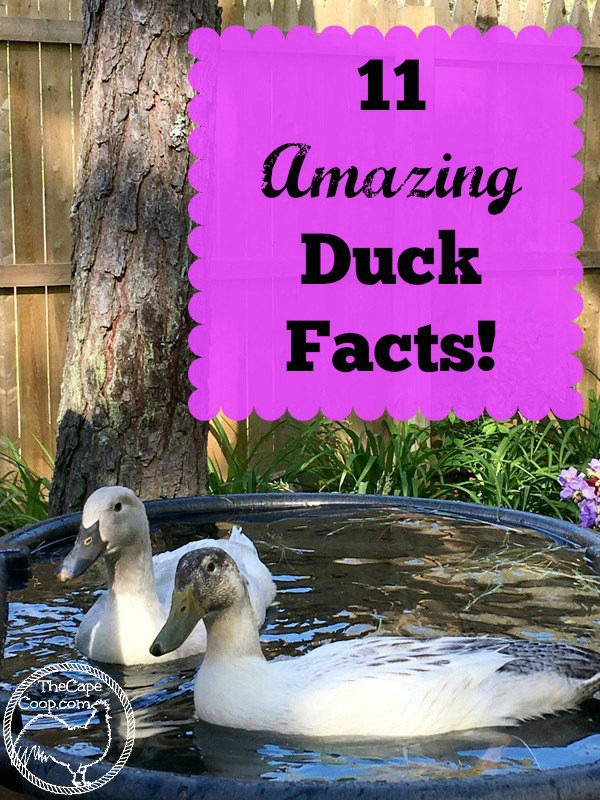

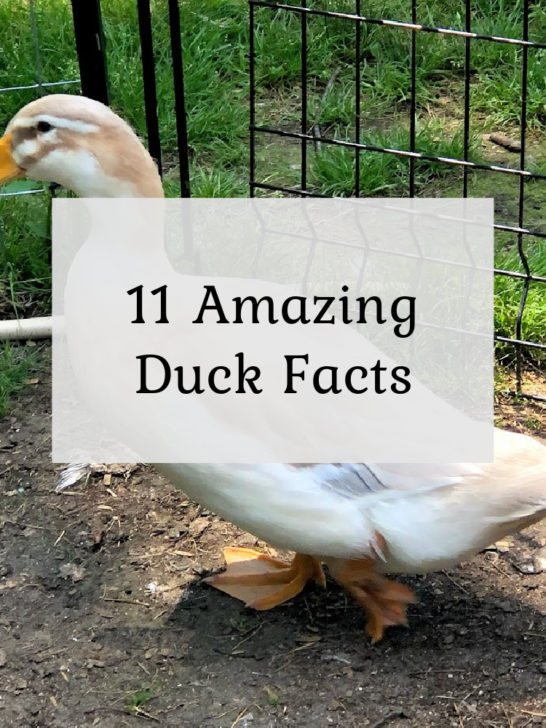

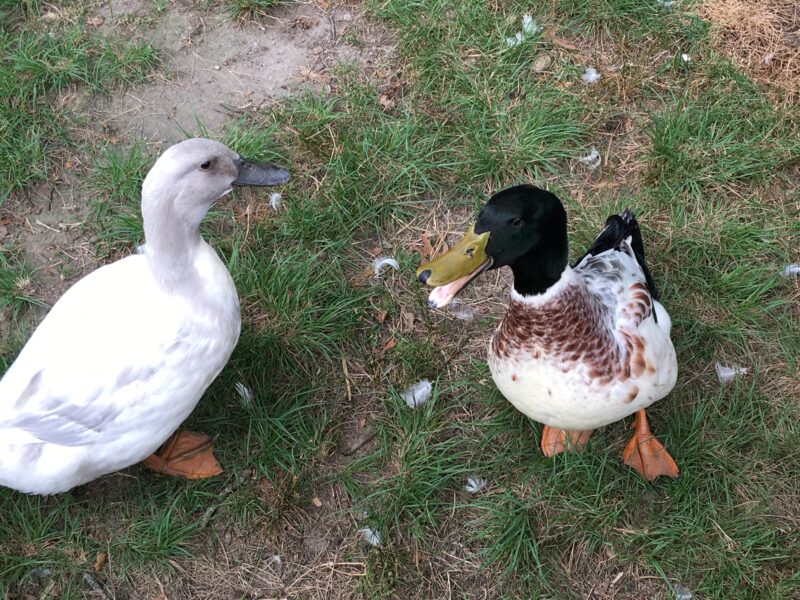
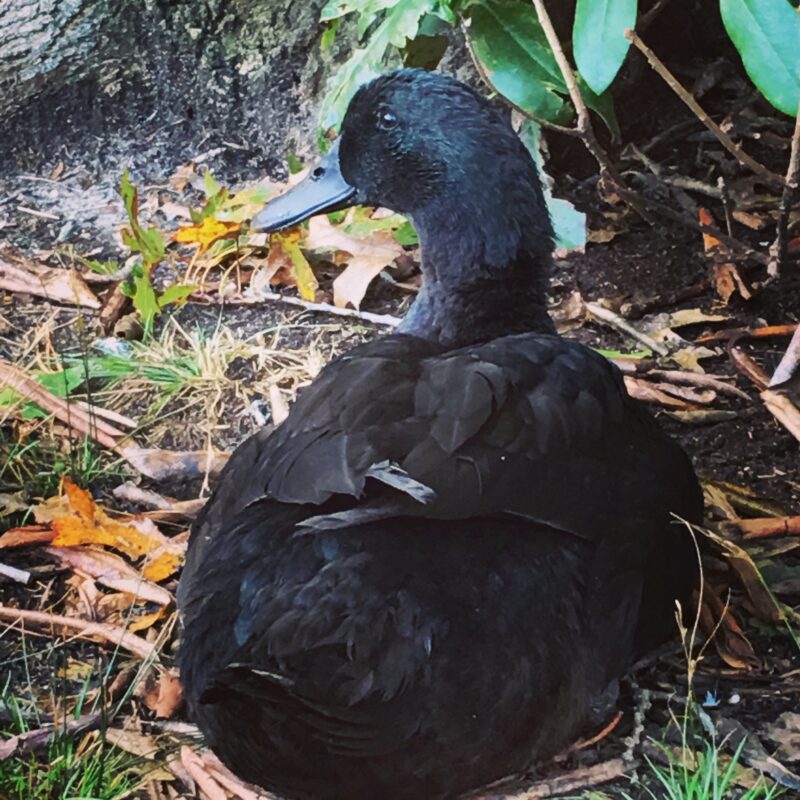
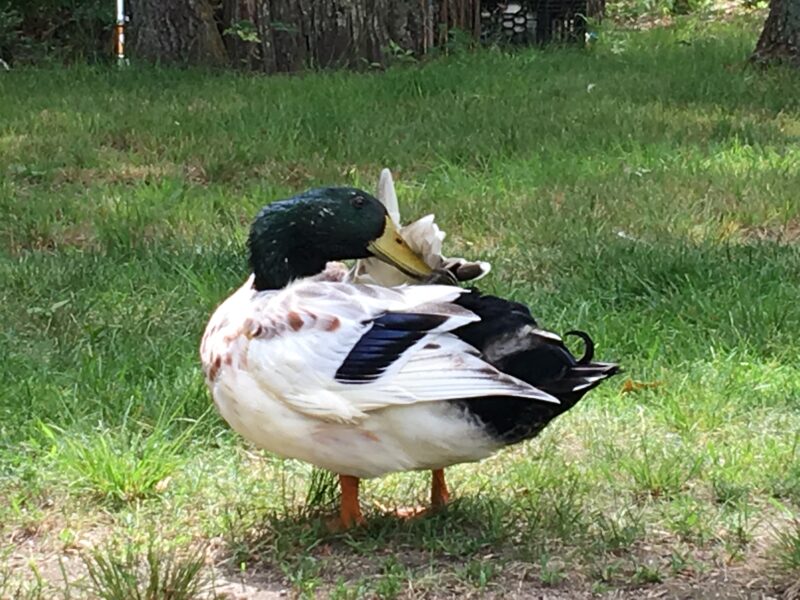
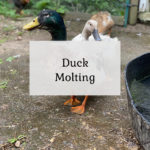

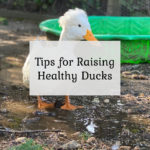
Chloe
Wednesday 14th of June 2023
I had six ducks, and one of them had bad legs and seemed to have a messed-up spine. I didn't know what I could do to help, and the situation was just getting worse and worse. Sadly, it passed away. And one of my other ducks passed away in the morning, and there was nothing wrong with it; it was a healthy-looking duck. So, I only have four ducks now.
Liz
Tuesday 20th of June 2023
Did your ducks get enough niacin as ducklings? Ducks need a lot more niacin than chicks so if you were feeding them chick starter they might not have received enough nutrients. Lack of niacin can cause weak leg muscles and bone issues. You can read more here: https://thecapecoop.com/ducklings-niacin/
Lisa Jakobi
Sunday 13th of June 2021
So I have a female I believe is a runner/Rouen cross. She made her nest earlier this spring which was stolen from her by my female Muscovy. The Muscovy hatched out half of the eggs and then gave up on the nest as her own eggs take 35 days instead of 28. My question is can a duckling have more than one father?
Liz
Tuesday 15th of June 2021
Each individual duckling would only have one father, but it's definitely possible for different ducklings in a clutch to have different fathers.
Ova Magnum
Friday 9th of April 2021
My male duck, that I bought when he was a few days old, has been changing into a female. His face is changing to look like a females face ( He is a blue swedish duck) and laid an egg this morning. I believe that he has changed because he is in a house with only 6 other drakes. Has anyone had this happen before?
Liz
Friday 9th of April 2021
Females that change to males are more likely, but it definitely can happen the other way too. I have a female duck that I think may have changed to male, you can read about their story here and a bit more about how it can happen: https://thecapecoop.com/angelica-the-bi-gender-duck/
Tammy
Wednesday 31st of March 2021
Thanks!!! And some frogs and fish etc....but of course NO mention of what I was looking for!!! Thanks again for the input!!!
tammy
Wednesday 31st of March 2021
Do you happen to know if geese can change gender as well? Google search is not helping. Nor do my books on ducks and geese...thanks!!! (Since I cant find info I'm ASSUMING no)
Liz
Wednesday 31st of March 2021
Most birds have the same type of reproductive system so the gender change should be able to happen in geese too. I've read a lot about songbirds and ducks changing, but like you I haven't specifically seen something on geese changing